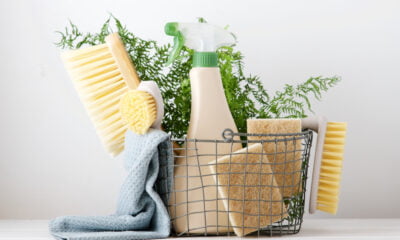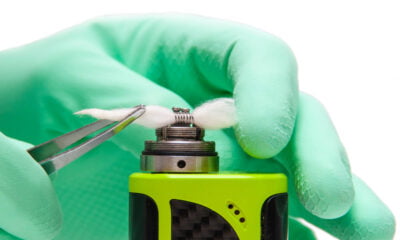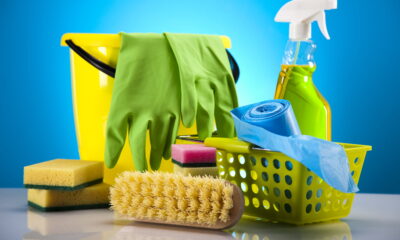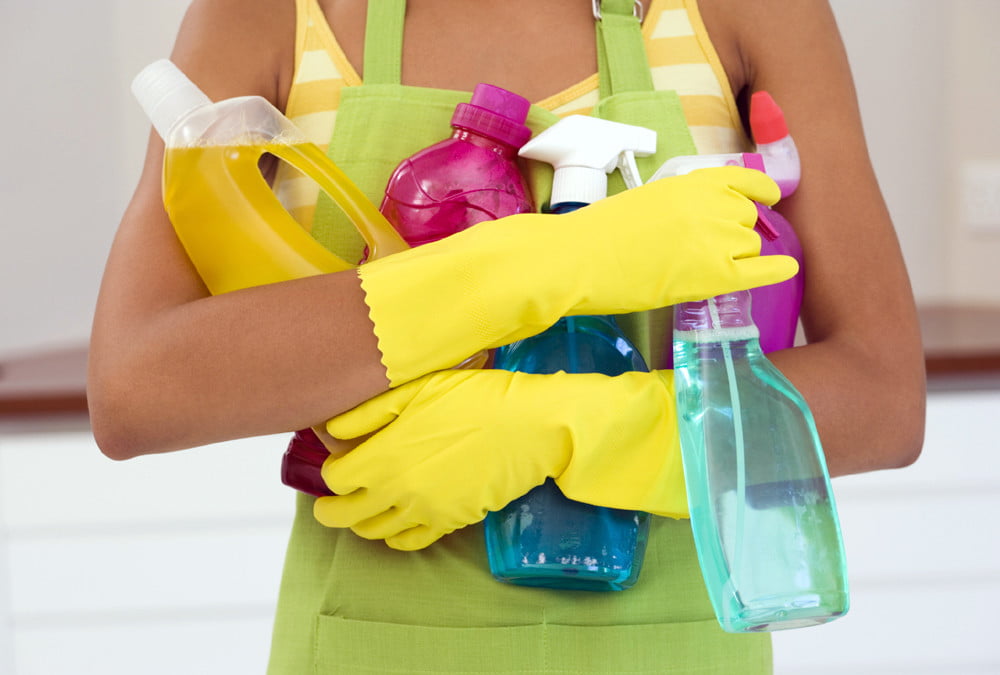
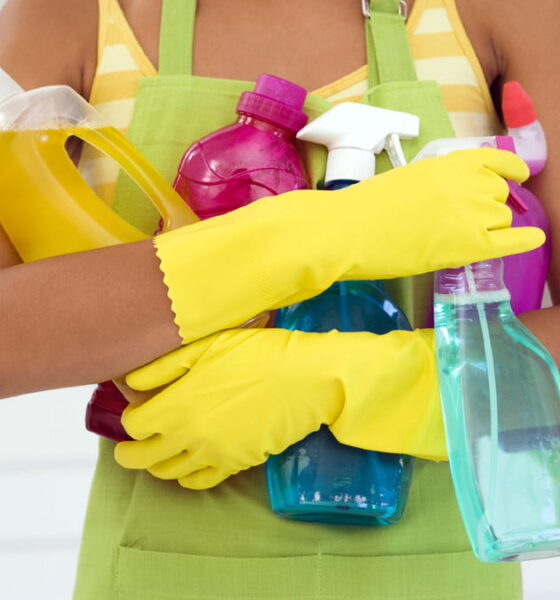
Environment
4 Eco-Friendly Cleaning Methods To Add To Your Green Cleaning Routine
Did you know that your cleaning routine can make an impact on the environment – either for better, or for worse? Because cleaning is an action that must be habitually repeated, week after week, year after year, each aspect of your cleaning routine becomes significant.
Your choice of cleaning products is important. For starters, each product you choose has an effect on your health. Just as important, each product you choose has an impact on the environment.
Your cleaning products don’t simply vanish forever when they slide down the drain. They typically end up in a treatment plant. But, because treatment plants are rarely 100 percent effective in removing every last substance from water, some of these substances inevitably end up finding their way into the environment. If you’re cleaning with truly safe substances like vinegar, this hardly matters. But if everyone is cleaning with toxic substances, the collective results could potentially be deadly to other living organisms, possibly including plankton in the water (which has seen an almost 50 percent decline globally in the recent past, according to CBC News) and perhaps then affecting countless other links in the food chain.
With so much at stake, it’s crucial for us all to give consideration to the products and methods we use for cleaning. We invite you to consider adding the following 4 eco-friendly methods to your green cleaning routine:
Disinfect Your Mattress Naturally
According to the experts at Ecosa, there are cases when you can use the sun’s UV rays as an effective disinfectant. For example, they’ve posted a simple step-by-step regiment you can follow for cleaning and disinfecting your mattress. Their method involves using a combination of spot cleaning and sun exposure. It’s easy enough for anyone to succeed with, although it’s a bit time consuming; using their method, it takes a minimum of 6 hours to achieve the desired effect. If your mattress hasn’t been cleaned lately, this method is well worth adding to your cleaning routine on an occasional basis.
Purify Your Air With Houseplants
Greenery is not only useful for enhancing your home’s décor; it’s also beneficial for improving the air quality in your living space. B.C. “Bill” Wolverton, an environmental scientist, made this discovery in the 1960s as he was working to purge the environmental damage that biological warfare centers created. When he found evidence to suggest that vegetation was actually reducing the havoc Agent Orange was wreaking on the environment, he researched the matter further. His conclusion was that aloe vera plants, spider plants, peace lilies and various other house plants could filter out air pollution caused by harmful substances including benzene, formaldehyde and others. This is an important discovery for those of you who live or work in an environment that includes particleboard furnishings or fixtures, which can contain formaldehyde and other undesirable substances.
The best part: No elbow grease is required for this particular cleaning and detoxification method – although, of course, you do have to remember to water your plants.
Make Your Own Organic Cleaning Supplies
Ordinary cleaning supplies you buy at the grocery store can be tainted with toxic ingredients that are not only detrimental to the environment; they’re also bad for your physical health. Natalie Wise, author of a book called The Modern Organic Home, has pointed out that such cleaning products can cause allergies. Worse yet, the ingredients in some cleaning products can also cause cancer, according to the American Lung Association.
To avoid subjecting yourself to toxic chemical ingredients, and also to save money, Natalie recommends making your own cleaning products. That’s actually the topic of her book; it’s a recipe book and manual for cleaning every surface in your home using safe, natural ingredients like vinegar, orange peels, lemon juice and tea tree oil.
Natalie’s book is great, and we highly recommend it; but if you want to give DIY cleaners a try before you invest in a book, you can find several free recipes for DIY cleaning products right here on this website. Find a few more ideas here.
Ditch the Disposable Paper Towels
Paper has a staggering impact on the environment. Its production is responsible for a significant amount of pollution in the air and water.
Since paper is often made using cellulose from wood, its manufacture contributes significantly to the 30 million acres of forest that are being destroyed every year. Those forests were once habitats for wildlife – but our wildlife is now vanishing at an alarming rate.
The worst part: Most paper isn’t even used to make anything of lasting value. Much of it is used once and then thrown away. The Worldcounts site reports that experts have estimated paper to comprise 40 percent of the overall volume of waste in the United States.
The main takeaway: We’re polluting our air and water, and we’re killing animals and wildlife that our world needs – and we’re doing this in exchange for tons and tons of paper that we don’t even want or need enough to keep for the long term. How foolish is that?
Obviously, paper towels aren’t the only culprit in this tragedy – but since this is an article about cleaning, paper towels are a good starting point for discussion.
If you were to buy a few packs of organic cotton dishcloths, you could skip using paper towels for cleaning your table and countertops after meals. If your family uses paper napkins, you could buy a few sets of cloth napkins to use instead. That would allow you to cut way back on your consumption of paper towels and napkins – which in turn would reduce deforestation, air pollution and water pollution. Investing in a feather duster and a few furniture-polishing cloths could reduce your paper towel consumption even further. Since the cost of paper towels and napkins can really add up over time, you’d also be likely to save money by doing this.
Final Thoughts: Clean Green
These are 4 things that wouldn’t require huge lifestyle changes for you to implement, but they could make a big impact on the environment. These methods also offer you the added benefits of a healthier home and an overall cost savings.


 Environment10 months ago
Environment10 months agoAre Polymer Banknotes: an Eco-Friendly Trend or a Groundswell?

 Environment11 months ago
Environment11 months agoEco-Friendly Home Improvements: Top 7 Upgrades for 2025

 Features9 months ago
Features9 months agoEco-Friendly Cryptocurrencies: Sustainable Investment Choices

 Features10 months ago
Features10 months agoEco-Friendly Crypto Traders Must Find the Right Exchange
